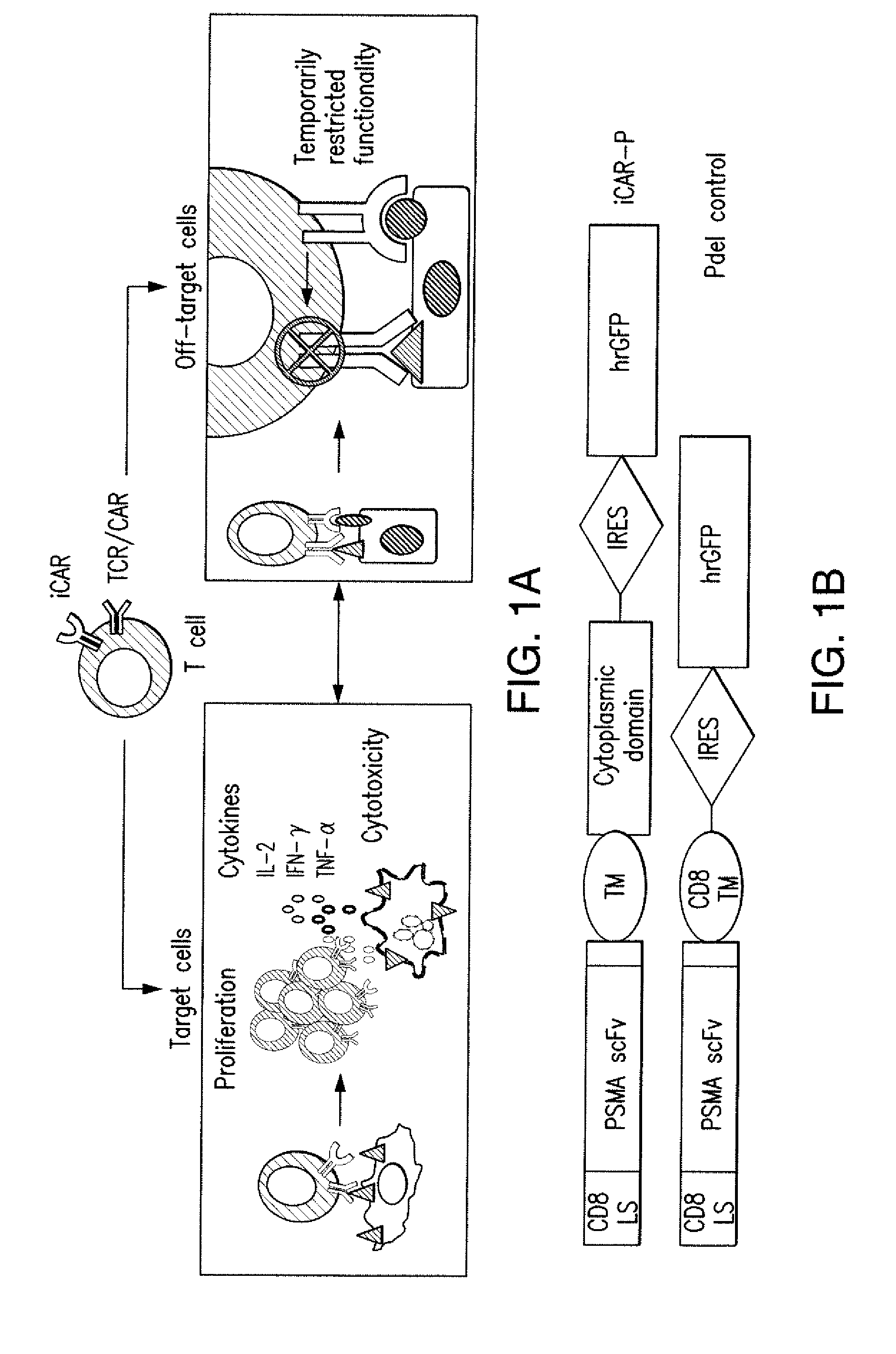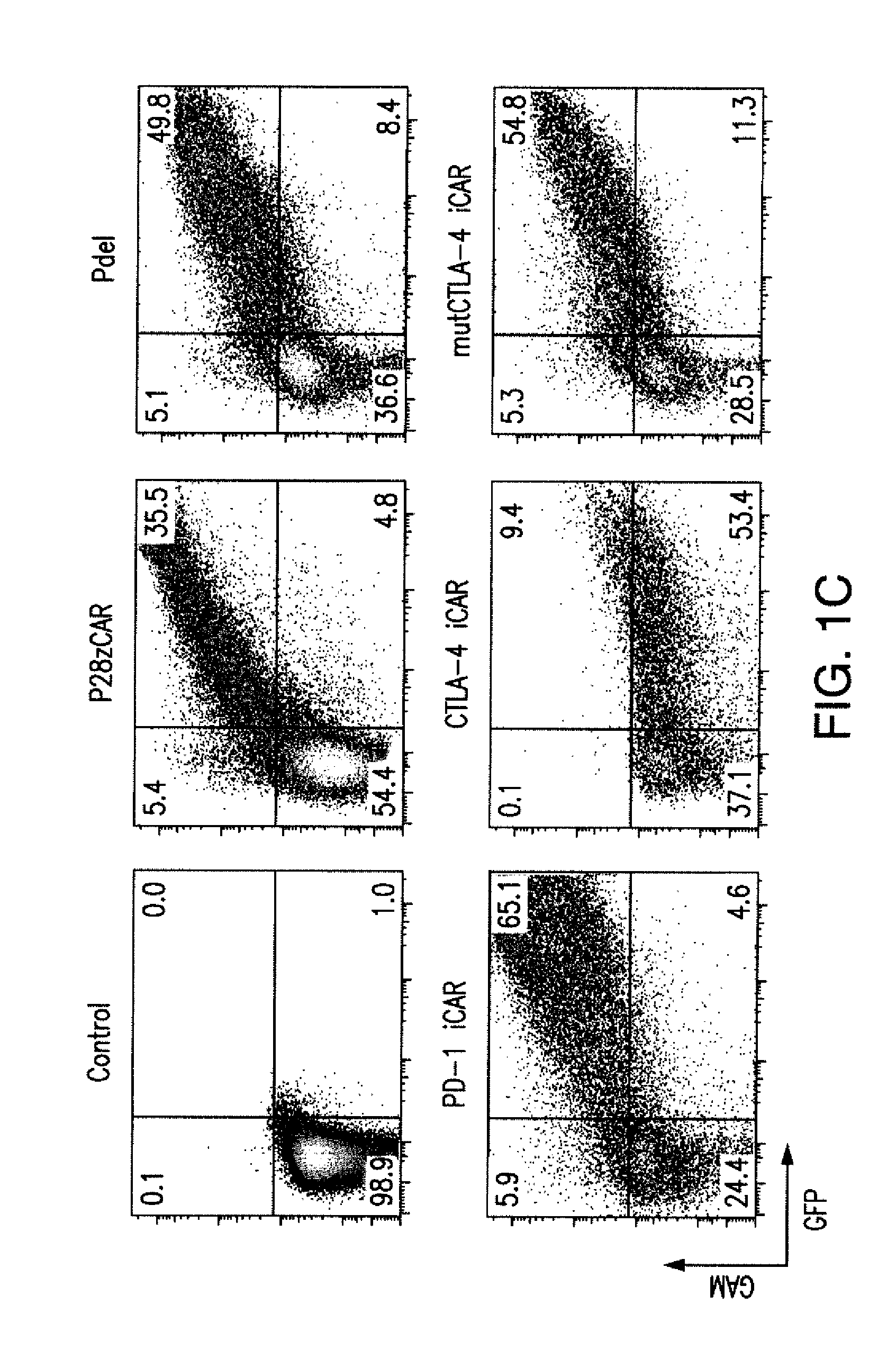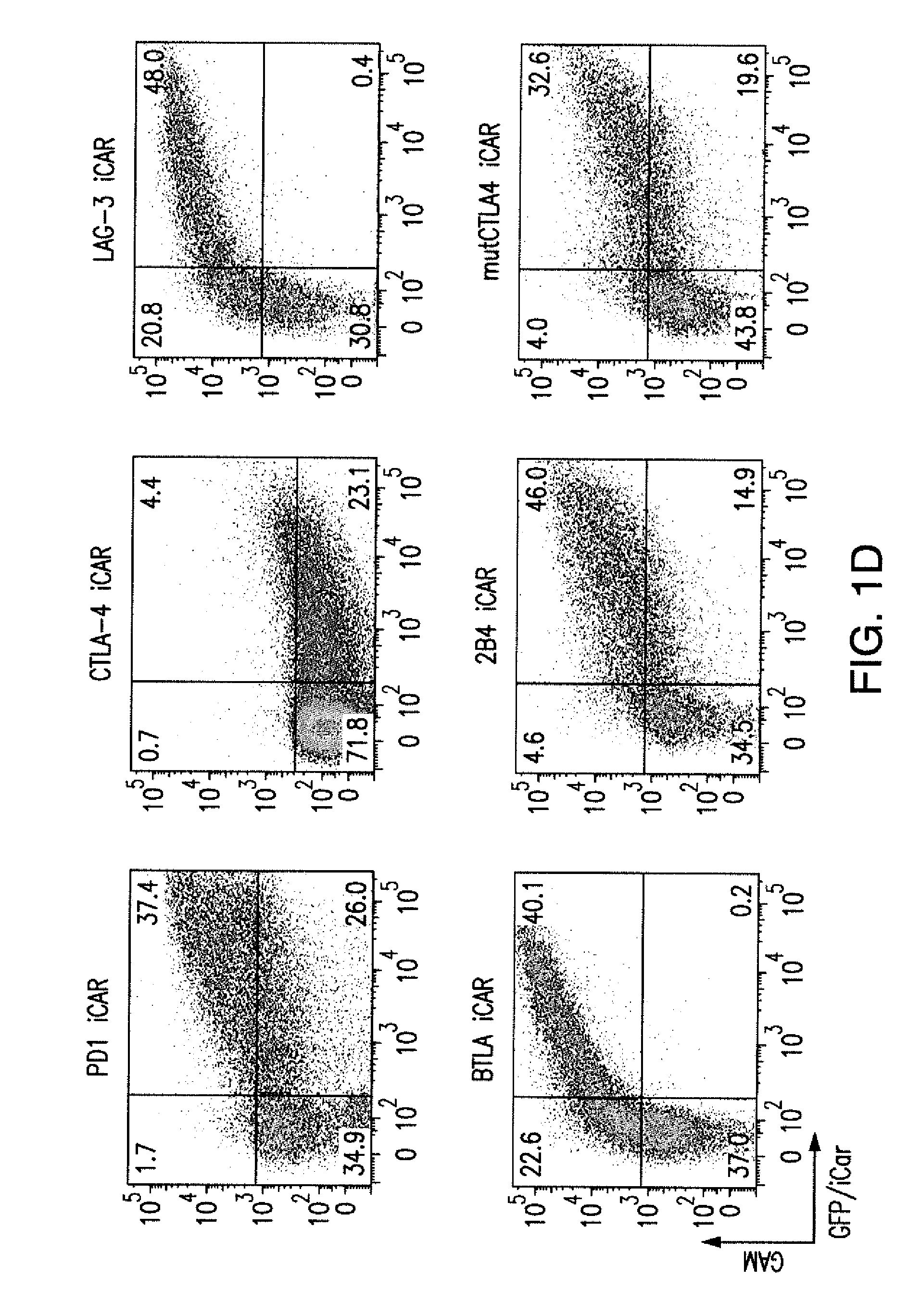Compositions and methods for immunotherapy
Active Publication Date: 2015-12-31
MEMORIAL SLOAN KETTERING CANCER CENT
View PDF2 Cites 50 Cited by
- Summary
- Abstract
- Description
- Claims
- Application Information
AI Technical Summary
Benefits of technology
The present invention provides immunoreactive cells (T cells, NK cells, CTLs, and regulatory T cells) that express a receptor that activates the immune system and an inhibitory receptor that reduces or eliminates immune activity. This reduces off-target effects and allows for the temporary deactivation of immunoreactive cells. This invention provides a way to treat various diseases such as cancer and infectious diseases.
Problems solved by technology
Unfortunately, T cells may also engage in deleterious side effects.
Similarly, the curative gains of donor lymphocyte infusion (DLI) in allogeneic bone marrow transplantation are hampered by the induction of both acute and chronic graft-versus-host disease (GVHD) and bone marrow aplasia (14).
Strategies to separate the beneficial effects of graft versus tumor (GVT) from GVHD have met with limited success to date (15).
Although effective, this approach fails to discriminate between beneficial and deleterious T cell functions.
Additionally, immunosuppressive drugs cause substantial secondary side effects, such as susceptibility to infections, and cardiac, kidney, and neurological damage (14).
Furthermore, these approaches are reactive because they are implemented after observing deleterious side effects.
However, similar to nonspecific immunosuppression, antibody-mediated inhibitory receptor checkpoint blockade is not antigen-specific and therefore does not discern between beneficial and deleterious T cell populations.
It is conceivable that T cells that repeatedly encounter off-target cells will not expand—a satisfactory outcome for the iCAR strategy, which aims to allow for therapeutic responses to proceed while diminishing the immune attack against normal tissues.
The overall expansion of the infused T cell population will integrate these different paths occurring at the clonal level, with some T cells undergoing expansion while others are suppressed, possibly resulting in the disappearance of all infused T cells over time.
A major limitation of this study is the lack of availability of a robust clinically relevant human “normal tissue” model, especially one that allows utilization of human cells, human antigens, and human TCRs, CARs, and iCARs.
In settings of high expression level of activating receptor or antigen and / or low expression of iCAR or iCAR-targeted antigen, sufficient blockade could not be achieved.
Method used
the structure of the environmentally friendly knitted fabric provided by the present invention; figure 2 Flow chart of the yarn wrapping machine for environmentally friendly knitted fabrics and storage devices; image 3 Is the parameter map of the yarn covering machine
View moreImage
Smart Image Click on the blue labels to locate them in the text.
Smart ImageViewing Examples
Examples
Experimental program
Comparison scheme
Effect test
example 1
Inhibitory Chimeric Antigen Receptor (iCAR) Divert Off-Target Responses
the structure of the environmentally friendly knitted fabric provided by the present invention; figure 2 Flow chart of the yarn wrapping machine for environmentally friendly knitted fabrics and storage devices; image 3 Is the parameter map of the yarn covering machine
Login to View More PUM
| Property | Measurement | Unit |
|---|---|---|
| Cell death | aaaaa | aaaaa |
| Size | aaaaa | aaaaa |
| Immunogenicity | aaaaa | aaaaa |
Login to View More
Abstract
The present invention provides immunoresponsive cells, including T cells, cytotoxic T cells, regulatory T cells, and Natural Killer (NK) cells, expressing an antigen recognizing receptor and an inhibitory chimeric antigen receptor (iCAR). Methods of using the immunoresponsive cell include those for the treatment of neoplasia and other pathologies where an increase in an antigen-specific immune response is desired.
Description
PRIORITY CLAIM[0001]This application is a continuation of International Patent Application No. PCT / US2014 / 030671 filed, Mar. 17, 2014 and claims priority to U.S. Provisional Application No. 61 / 802,118, filed Mar. 15, 2013, to both of which priority is claimed and the contents of both of which are incorporated herein in their entireties.INTRODUCTION[0002]The present invention provides immunoresponsive cells including an antigen recognizing receptor that binds a first antigen and an inhibitory chimeric antigen receptor (iCAR) that binds a second antigen, where the binding of the antigen recognizing receptor to the first antigen activates the immunoresponsive cell, and the binding of the iCAR to the second antigen inhibits the immunoresponsive cell. The present invention also provides methods of producing the immunoresponsive cells, and methods of treating cancers by using the immunoresponsive cells.BACKGROUND OF THE INVENTION[0003]T-cell based therapies have curative potential in bone...
Claims
the structure of the environmentally friendly knitted fabric provided by the present invention; figure 2 Flow chart of the yarn wrapping machine for environmentally friendly knitted fabrics and storage devices; image 3 Is the parameter map of the yarn covering machine
Login to View More Application Information
Patent Timeline
 Login to View More
Login to View More IPC IPC(8): C07K16/40C07K14/73C07K14/725A61K35/17C07K14/705
CPCA61K35/17C07K14/7051C07K14/70514C07K14/70517A61K2039/5158C07K2317/622C07K2319/30A61K39/0011A61K2039/5156C07K16/40A61P1/18A61P11/00A61P13/08A61P15/00A61P19/00A61P21/00A61P31/00A61P35/00A61P35/02A61P37/02A61P37/04A61P37/06A61P43/00A61K39/46431C12N5/0638A61K39/4636A61K2239/22C12N5/0636A61K2239/26A61K2239/31A61K39/464412A61K39/4611A61K39/464495A61K39/4631A61K39/46434A61K2239/38A61K39/4621A61K39/001153A61K39/001114A61K39/001102A61K39/001171A61K39/001193A61K39/001113A61K39/001128A61K39/001112A61K39/001166A61K39/001195A61K39/001182A61K39/001129A61K39/001188A61K39/00117A61K39/001124A61K39/001119A61K39/001168A61K39/001126A61K39/001109A61K39/00118A61K39/001157A61K39/001106A61K39/001186A61K39/001117C07K14/70521C07K16/2803C12N2510/00C07K2319/02C07K16/30
Inventor FEDOROV, VICTOR D.SADELAIN, MICHEL
Owner MEMORIAL SLOAN KETTERING CANCER CENT
Features
- R&D
- Intellectual Property
- Life Sciences
- Materials
- Tech Scout
Why Patsnap Eureka
- Unparalleled Data Quality
- Higher Quality Content
- 60% Fewer Hallucinations
Social media
Patsnap Eureka Blog
Learn More Browse by: Latest US Patents, China's latest patents, Technical Efficacy Thesaurus, Application Domain, Technology Topic, Popular Technical Reports.
© 2025 PatSnap. All rights reserved.Legal|Privacy policy|Modern Slavery Act Transparency Statement|Sitemap|About US| Contact US: help@patsnap.com



